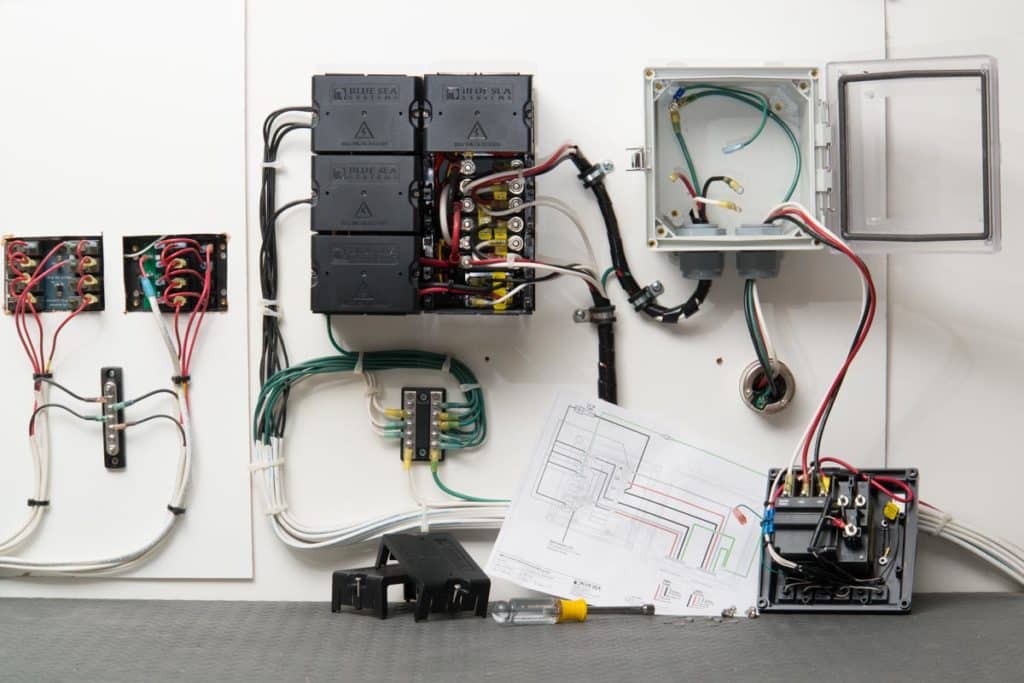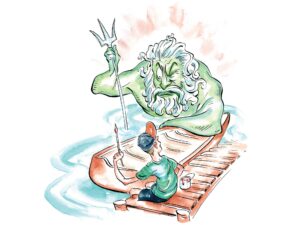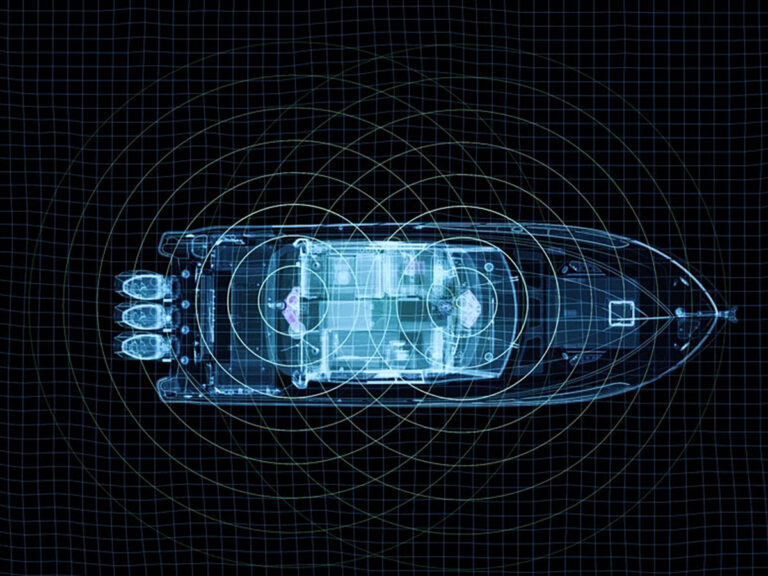
The best prevention for ESD is an Equipment Leakage Circuit Interrupter installed on the shore cord inlet. Just like GFCI outlets in your boat’s galley or home’s kitchen, ELCIs measure the magnetic field generated by current flowing through the two or three wires that bring power into your boat. While each individual wire will tick that measurement, the net of the wires should always be zero. “All the electrons going out through one wire should be coming back through another,” says Wayne Kelsoe, retired senior electrical engineer for Blue Sea Systems. Any imbalance means electricity is leaking somewhere — never good. If the leak reaches 30 milliamps, that ELCI will open the circuit quicker than the blink of an eye.
ELCI protection has been included in ABYC electrical standards since 2011. They’re also readily available in a complete package to retrofit to older boats. Before you begin, triple-check that shore cord, generator and inverter circuits are secured off. Using our test light procedure or a multimeter, also ensure neutral wires aren’t improperly connected to the boat’s ground system.



Connect the wires from the shore power inlet receptacle to the ELCI’s “source” side. All green ground wires run to one common lug, including a tiny pigtail with quick-disconnect fittings that Blue Sea Systems pre-wires for reverse polarity indicators.
Install the ELCI into its housing and test.
If you can’t use PVC-jacketed multi-conductor “boat wire”, make sure individual wires are run together as a group, so they absorb electromagnetic interference equally — like radio waves — or risk nuisance ELCI triggers from differences between the wires’ EMI absorption. Also be sure individual or jacketed wires are secured within 6 inches of each electrical box or fitting and every 18 inches between, and protected from chafe and physical abuse.
“The ELCI doesn’t protect against faults upstream,” Kelsoe warns, meaning the wires and fittings from the shore cord inlet to the ELCI must be scrutinized closely. In particular, he finds, any water that gets past the weathertight cap or shore cord plug collects on the bottom and back of the receptacle, possibly creating a path for AC power to leak to ground here. “Inspect that receptacle often and replace it if it’s discolored or showing signs of corrosion,” Kelsoe says. Also test the ELCI per manufacturer instructions after installation and each month.
Materials List for one 50-amp 240-volt cord (pictured) — You’ll need one full set for each shore cord inlet receptacle aboard
One Blue Sea Systems PN3119 ELCI prewired into a weatherproof box. ($540 amazon.com)
Not more than 10 feet of 6-gauge, 4-conductor wire. (Pacer Marine round boat cable includes three No. 6 wires plus a green No. 8 ground wire perfect for this installation, available by the foot for $4.97 per foot from bestboatwire.com).
Terminal ends, cable clamps and/or ties, chafe protection, mounting screws and basic wiring tools.
Materials List — Two 30-amp 120-volt shore cords
One Blue Sea Systems PN3117, which includes two pre-wired ELCIs in one weatherproof box. ($490 amazon.com)
Two 10-foot lengths of 10-gauge, 3-conductor boat wire (Ancor 131110 from West Marine $2.20/foot).
Terminal ends, cable clamps and/or ties, chafe protection, mounting screws and basic wiring tools.









